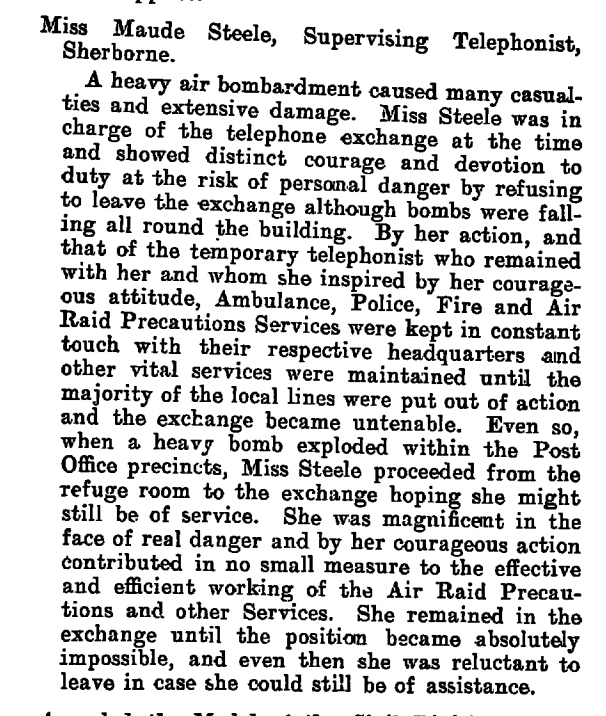It was North Dorset’s worst day of the Second World War, yet it was also a case of mistaken identity.
When 37 Heinkel He.111 bombers flew over Yeovil just before 4pm on September 30, 1940, their intended target was the Westland Aircraft factory and aerodrome.
But 90 per cent cloud cover at 20,000 feet obscured the Somerset town and Sherborne copped it instead.
Estimates of the number of bombs that fell on the Abbey town in three disastrous minutes vary wildly from 60 to 300.
But other statistics of the destruction are more certain.
Eighteen people died and 31 needed hospital treatment. The names of the dead are recorded alongside the war memorial in Half Moon Street.

The wreckage of Phillips and Son’s outfitting department and (far right) the part of the Half Moon Inn, which narrowly avoided destruction
More than 680 buildings were damaged and 86 destroyed, mostly houses or shops.
Foster’s Infants School in Newland took a direct hit but thankfully its pupils had left for the day 15 minutes earlier.
Amazingly, the Abbey and its historic precincts survived virtually unscathed as bombs rained all around.
The most detailed account of the events that autumn afternoon came from Edward J. Freeman, clerk to Sherborne UDC and the district air raid precautions controller.
It happened to be Mr Freeman’s birthday and he had taken a rare day off and was queuing for the cinema in Yeovil when he heard the ‘thud of bombs’ to the east and saw the pall of black smoke.
It could only be Sherborne and he drove straight back and picked his way through the debris to the council offices.
The raid had cut off all water, gas, electricity and telephone services and blocked the sewers and all roads out of Sherborne.
The telephone exchange took a direct hit and its supervisor, Miss Maud Steele, became a heroine after organising the relaying of urgent messages to the outside world by road.
For her dedication to duty, she became one of the first recipients of the new George Cross, known as the ‘civilians’ VC’.

There were several strange incidents.
In The Avenue, a Miss Billinger reputedly climbed from her bath into the open air after much of her house was blown away.
The cemetery also took a direct hit and a coffin, buried just a week earlier, was blown out of the ground.
In Horescastles, bombs landed on both sides of a terrace causing outhouses to implode away from the main buildings due to a bellows effect.

Foster’s Infants School in Newland took a direct hit
At a bakery next to the Picture Palace in Newland, a hoard of silver coins was thrown on to the cinema roof and retrieved by an ARP warden.
At least six bombs were delayed action and went off 12 hours after the raid.
Like most crises and disasters, the raid brought out the community spirit.
After learning that 10 council houses in Lenthay had been destroyed and most of the remaining 108 houses badly damaged, Mr Freeman sent his billeting officer to organise rehousing.
But by the time he arrived, all the homeless had already been offered alternative shelter by other townsfolk.
‘It was quite extraordinary what happened there, and it happened all over the town,’ Mr Freeman told my late colleague Rodney Legg in an interview for Dorset County Magazine in 1984.
‘If ever I have admired the people of Sherborne as a whole, it was after the raid.
‘I had told the schools they might have to put people up that night, but in the event it wasn’t necessary.’
Roger Guttridge



Maud Steele was not awarded the George Cross. Only four have been, three of them members of SOE and the fourth an air stewardess at Heathrow in the late 1960s. She seems not to have been awarded the slightly less prestigious George Medal either.
This should have read ‘four women’. My apologies.
I was relying on the list of George Medal winners in Wikipedia, which is in error. She was in fact awarded the George Medal, and the notice of this appears on page 47 of Issue 35030 of The London Gazette, dated 3rd January 1941, which is available online and explains why the award was made.
Thank you for the correction Ken – I’m glad Roger was correct in his article, and I have now amended it to include the London Gazette listing, thanks to your helpful tip on where to find it. Ed.